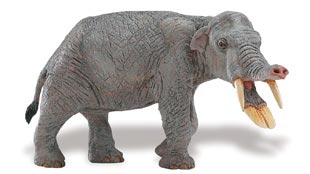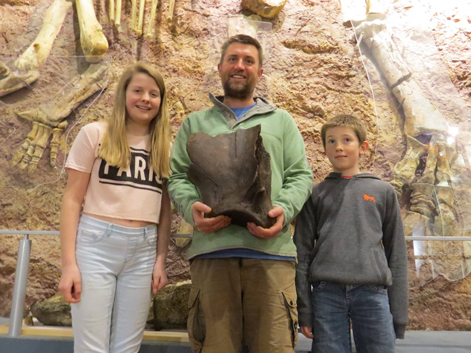An exceptionally low tide and a sharp-eyed beachcomber combined to permit another addition to be made to the prehistoric fauna of the Isle of Wight. This small island off England’s southern coast, might be nick-named “the dinosaur fossil capital of Great Britain”, thanks to the wonderful, Early Cretaceous dinosaur fossil finds that have been made, but this new fossil represents a much more recent resident.
Paul Hollingshead was exploring the rocks and sand ledges exposed by a really low tide back in March 2015, when he noticed a strange brown object partially sticking out of the mud. He had been hoping to pick up some old fishing leads that he could melt down and recycle, but instead he thought he had stumbled upon the bone from a dinosaur.
Isle of Wight Geology
The geology of the Isle of Wight is quite complicated. Less than 10% of the island has exposures of Cretaceous aged strata (Wealden Group), the majority of the rocks are much more recent, dating from the Pleistocene Epoch for example. The large fossil bone has been identified as belonging to an extinct straight-tusked elephant Palaeoloxodon antiquus that roamed this part of Europe during a warm interglacial period when annual average temperatures were at least three degrees Celsius higher than today.
The bone is estimated to be around 100,000 years old – (Ipswichian stage) and it has been put on display at the local museum at Sandown. In the picture above, finder, Paul shows off the scapula (shoulder bone) with his daughter Lily and son Shay looking on. In the background is an exhibit of a more famous Isle of Wight resident an iguanodont.
That Big Elephant Family
Palaeoloxodon antiquus, is just one species in the Palaeoloxodon genus, these elephants were particularly widespread during the Pleistocene with fossils associated with Germany, Cyprus, Malta, Africa and Kent (southern England). Many of these types of elephant become isolated in southern Europe as sea levels rose leading to dwarf forms having been identified on a number of Mediterranean islands. The legend of the one-eyed cyclops may originate from prehistoric elephant skull fossil finds.
To read more about the potential link between ancient elephants and monsters from Greek legend: Dwarf Elephants and Legends.
The extant elephants, those species that are alive today, are members of the Elephantidae family, but there were a number of closely related other elephant families, all of which are now extinct.
Prehistoric Elephant Fossil
Straight-Tusked Elephant (Amebelodon)

A straight-tusked “shovel-tusker”.
Picture credit: Everything Dinosaur
For models and replicas of prehistoric elephants and other animals: Eofauna Scientific Research Models.
Commenting on his fossil discovery, Mr Hollingshead stated:
“I remember it was a big five-metre tide, so I knew the water would go out a long way, when I saw what looked like a bit of bone showing from the sand. I stopped and realised it was a bit bigger, so I started clearing all of the sand and stones away from it. I was shocked how big it was and spent around two and a half-hours digging it out. I was hoping it was a dinosaur bone, so was quite shocked to find out it was from an elephant.”
A Shoulder Bone
The prehistoric elephant shoulder bone has been donated to the island’s Dinosaur Isle Museum. It has taken several months to prepare the fossil for display as, in geological terms the bone is very young, so young in fact that the permineralisation process (the replacement of organic matter with minerals), is not complete. Extensive conservation was required to prevent the bone from disintegrating.
Click on the link below to read about a remarkable elephant discovery from Kent.
Giant Prehistoric Straight-Tusked Elephant from Kent: Homo heidelbergensis and the Straight-Tusked, Giant Elephant from Kent.



